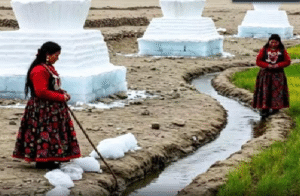Sikkim is India’s least populated state, with a population of 610,577. Located in the northeastern part of India, Sikkim is renowned for its breathtaking natural beauty, including the majestic Kanchenjunga, the third-highest mountain in the world. The state is also home to lush landscapes, pristine rivers, and vibrant flora and fauna, making it a popular destination for nature enthusiasts and tourists.
Despite its small population, Sikkim has gained recognition for its progressive policies, particularly in environmental conservation and sustainable development. The state became the first in India to achieve 100% organic farming, promoting eco-friendly agricultural practices and reducing the use of harmful chemicals. Sikkim’s commitment to environmental sustainability extends to its efforts in wildlife protection and forest conservation.
In the field of education, Sikkim has made significant strides, offering quality education and fostering literacy. The state’s education policies have led to improved access to schooling, with a focus on both urban and rural areas. The state government has also encouraged initiatives to enhance the quality of higher education and vocational training.
Sikkim’s rich cultural heritage is a blend of various traditions, primarily influenced by its Buddhist and Nepali communities. The state’s festivals, arts, and cuisine reflect this cultural diversity, making Sikkim a unique and vibrant region of India.
Overall, Sikkim, with its peaceful environment and forward-thinking policies, stands as an example of how small states can have a significant impact on national progress.







